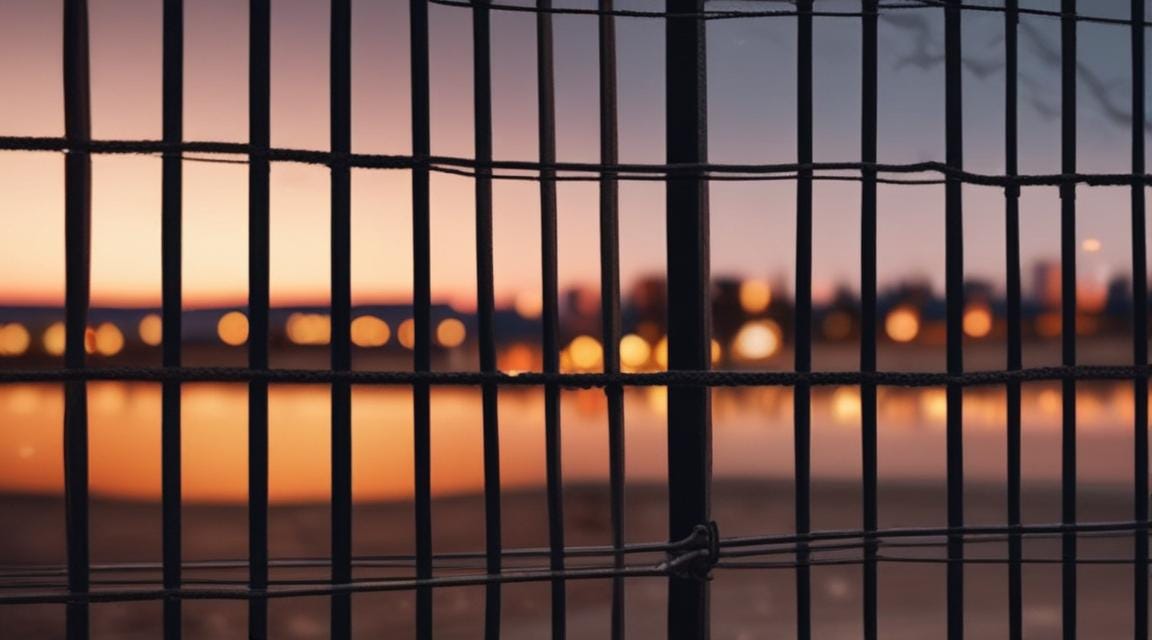Republished chapter of Doing Time: American Mass Imprisonment Pandemic
(In late 2018, if I remember correctly, I started writing an oral history book about mass incarceration, interviewing prisoners, their family members, locals throughout Alabama, ministers, and many others. Each told their story of how American prison has impacted their lives, their families, their communities.
At that time, the living conditions in the prisons, the dilapidated infrastructure, the overcrowding (approximately 180 percent of capacity when I started the book), the quality and cost of the phones, the quality of the food, the rodent problems, (in some cases stray cat problems), the violence, the understaffing, the fact that, as the ADOC confirmed to me in an email at that time, social distancing is not possible in any prisons, sewage problems, extremely poor quality healthcare and high likelihood of spreading illness, and much more, had long been in place.
Then the Covid-19 pandemic broke out. And all of the urgent, inhumane crises listed above that already existed in the prisons, big and small alike, seemed like turbocharged public health emergencies to me, and I felt somewhat alone with it. Indeed, in Alabama, it was weeks after announcements for closing things like schools and other institutions due to the pandemic that I found any announcements in the press there about the prisons. I had a unique level of access to sources within the prisons at that time, and I wanted to write the stories as soon and fast as possible, because the conditions my sources were living in, and their stories, felt like even more of an emergency than they did before Covid hit. The horrendous problems that already existed were exacerbated, and new horrendous problems were created on top of them, as a result of the pandemic. As has been widely researched, the unsanitary, disease and virus breeding conditions in which prisoners live is not a threat just to the prisons but to communities in the free world as well. For example, much like police officers, prison employees often don’t live in the same towns they work in. In a pandemic, let alone all the time, this is obviously crucial if one is working in places like prisons that are even more likely to breed contagious illnesses and have extremely poor healthcare systems.
For the time being, I tabled the broader oral history project about mass incarceration when the pandemic hit, and turned instead to writing investigative journalism articles about what was unfolding in the prisons as fast as I could, as much as I could over those next eight months or so, interspersed with articles about the prisoners, their life stories, their beliefs and opinions about what was happening to them in the prisons and what was happening in the free world, and other topics. Some were published in Eunoia Review. Several, mostly about prison transfers, were adapted into a series by the staff of Scheer Post. I serialized almost all of them on my website at the time, hardtimesreview.com, which I no longer have, then published most of them together in Doing Time: American Mass Imprisonment Pandemic, in the order they were written. Since I no longer have the website where they were originally serialized, I figured I’d republish chapters here on the Substack over the months in between new projects about the prisons and projects on other subjects. Many of the stories are still relevant, sadly, and for those interested, reading them may also offer background to some of the current work I do about the prisons.
This is Chapter One/the introduction of Doing Time. This chapter covers February through May of 2020, and focuses primarily on unpaid prison labor and food. Other chapters will be republished here as well going forward.
You can buy the book here, and/or please consider upgrading to the paid version of the Substack if you’re able, or gifting a subscription to someone who might be interested in the work!)
Work and Food: February - May 2020
Imprisoned workers in Alabama are not paid. In 2017, Prison Policy Initiative reported that Alabama is one of six states in the country to pay imprisoned workers nothing, which is only slightly less than states that pay something.[i] In other centuries, there was a word for that.
Alabama also has a long and persistent history of sickness throughout its prisons, such as tuberculosis,[ii] scabies[iii] and other diseases. In early 2020, Ventress prison is still dealing with a tuberculosis outbreak among prisoners as Covid-19 first hits the United States. In February 2020, at William C. Holman Prison, a prisoner I call “X” in this book tells me a wave of illness, diagnosed by medical staff as “flu-like symptoms,” is spreading through “all eight tiers” of the prison.
Though not sick himself, X carries the burden of this spreading illness as he is covering sick prisoners’ shifts in more parts of the prison. Several times a week, from February to early March, X works 16 hours a day without pay.
Keep reading with a 7-day free trial
Subscribe to Hard Times Reviewer to keep reading this post and get 7 days of free access to the full post archives.



